Abstract
A cross sectional, prevalence survey of eye disease in the population over 75 years old of Melton Mowbray has been used to examine the accuracy and completeness of the Blind and Partially Sighted Registers. The Blind Register had high sensitivity and specificity but was found to underestimate the prevalence of blindness by a factor of 1.1. The Partially Sighted Register had high specificity, but the sensitivity was only 50% and it underestimated the prevalence of partial sight by a factor of 1.5. Seven persons eligible for registration, but previously not registered, were found, two as blind and five as partially sighted. This represented 21% of the registrable visually impaired population.
Full text
PDF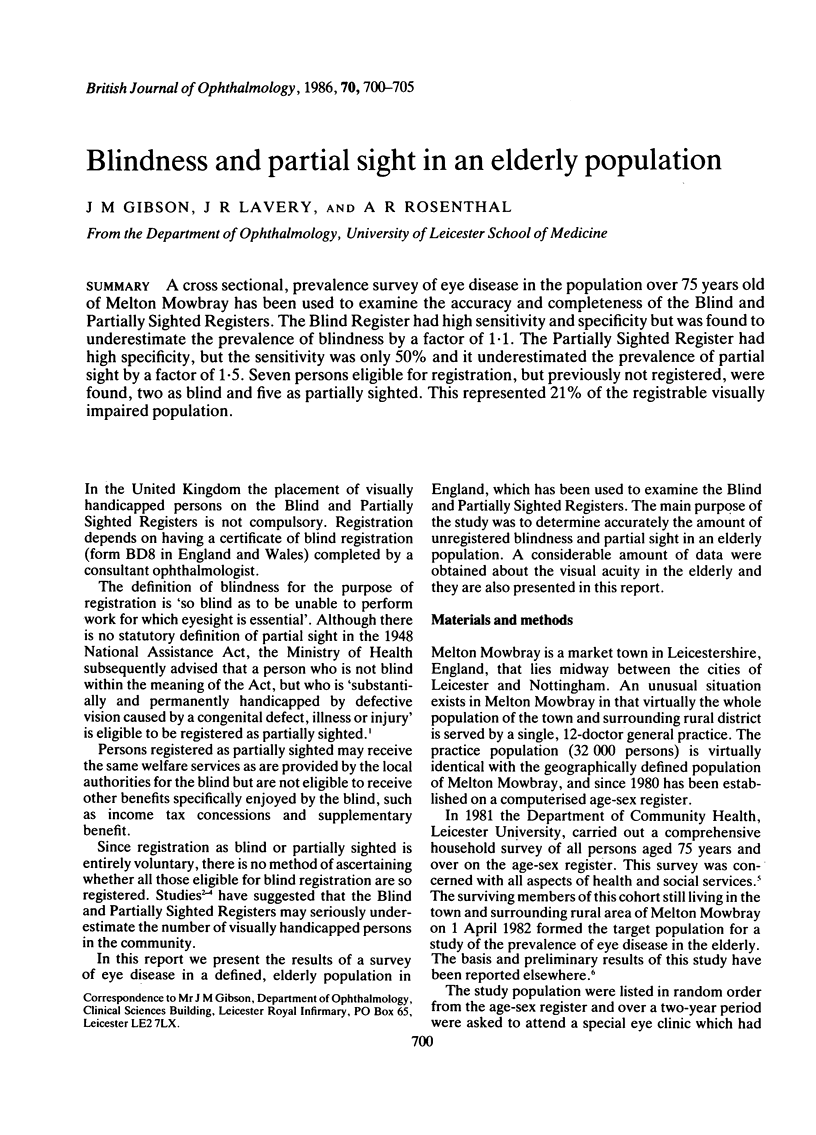
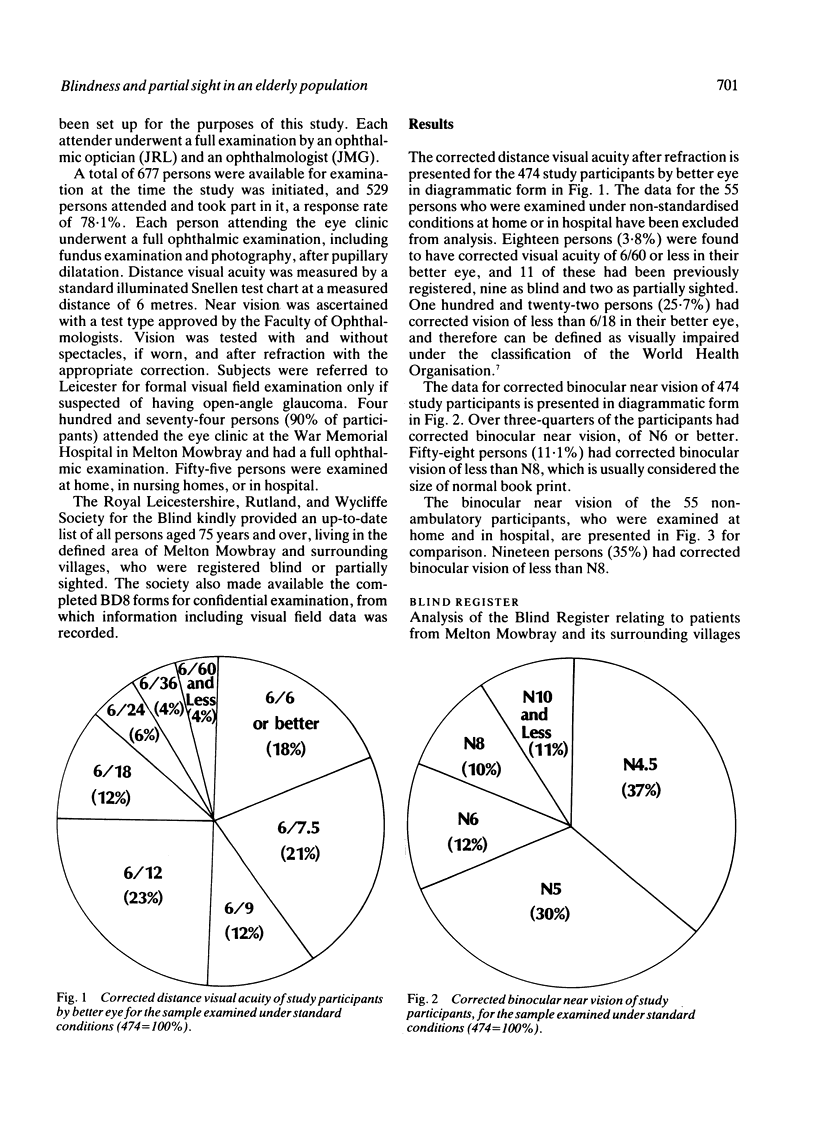
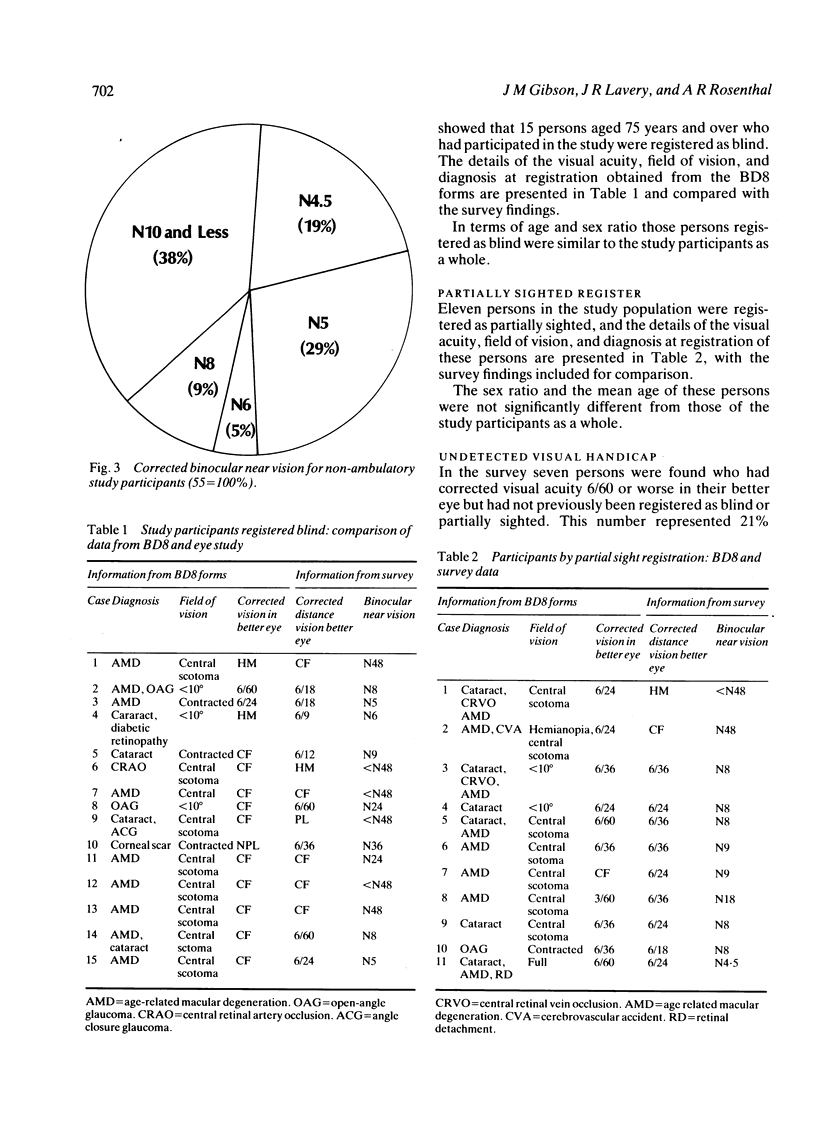
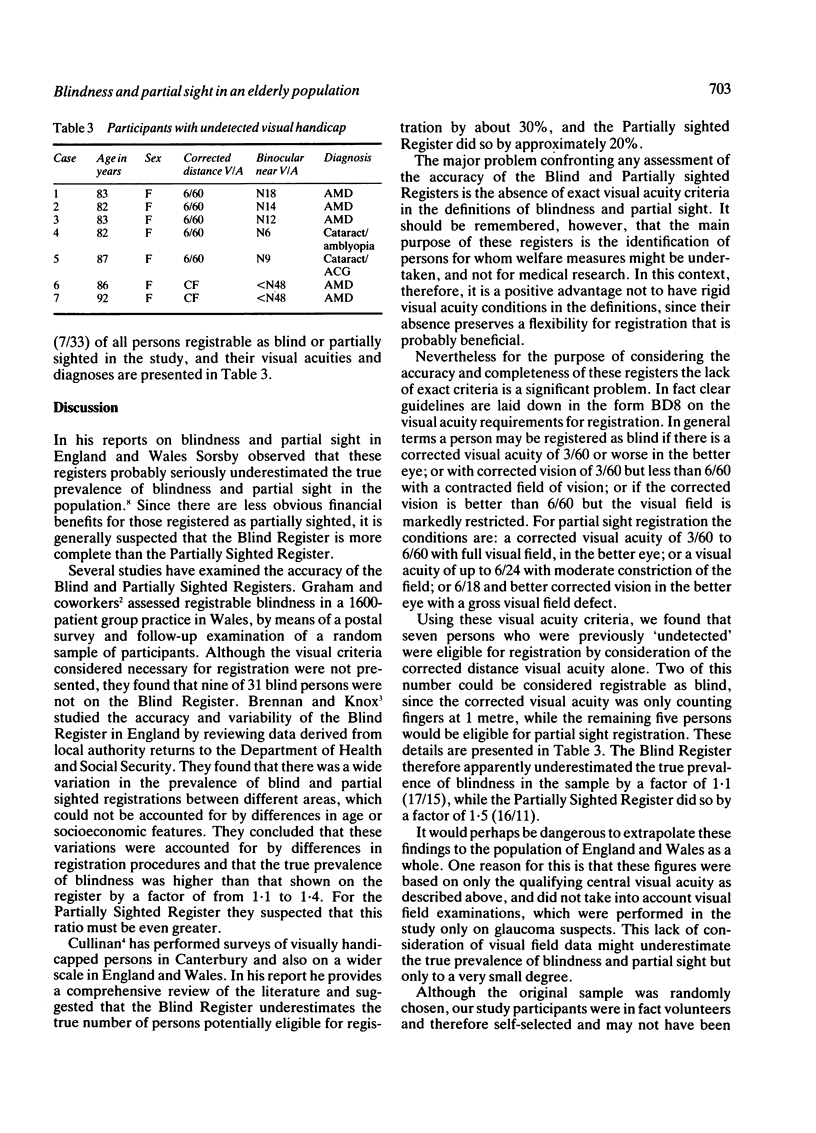
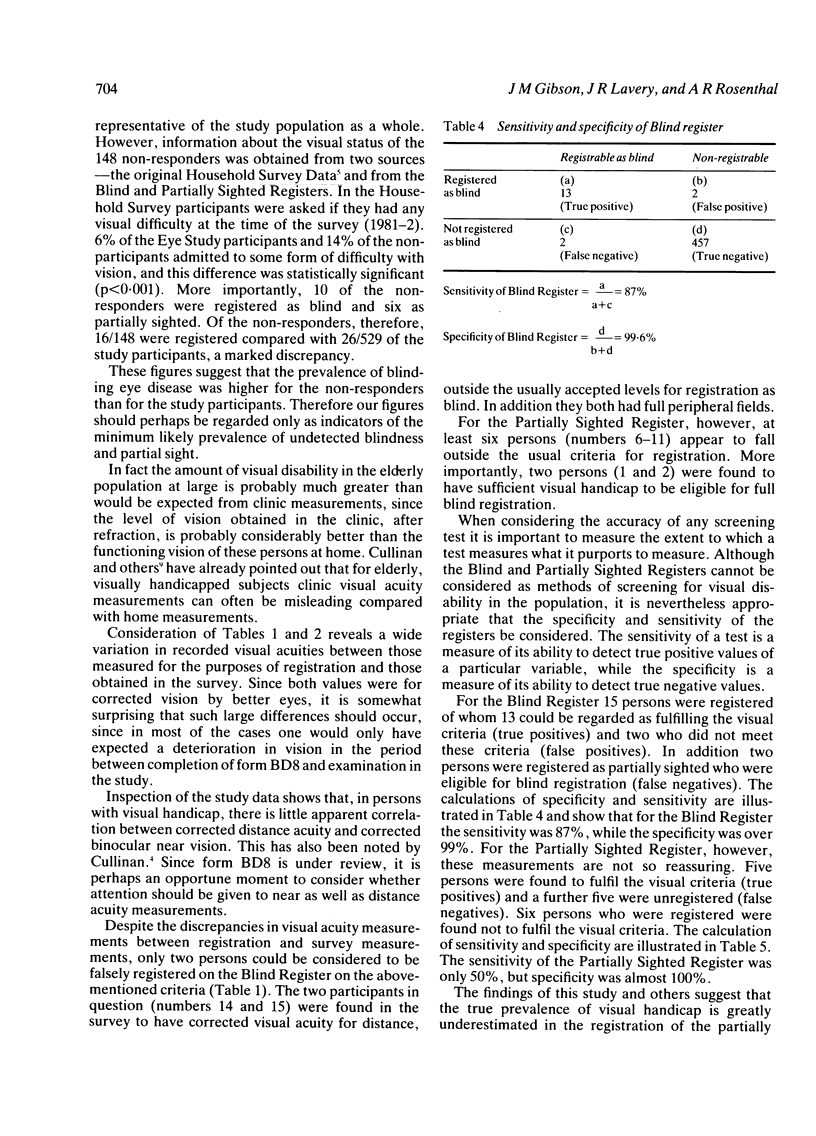
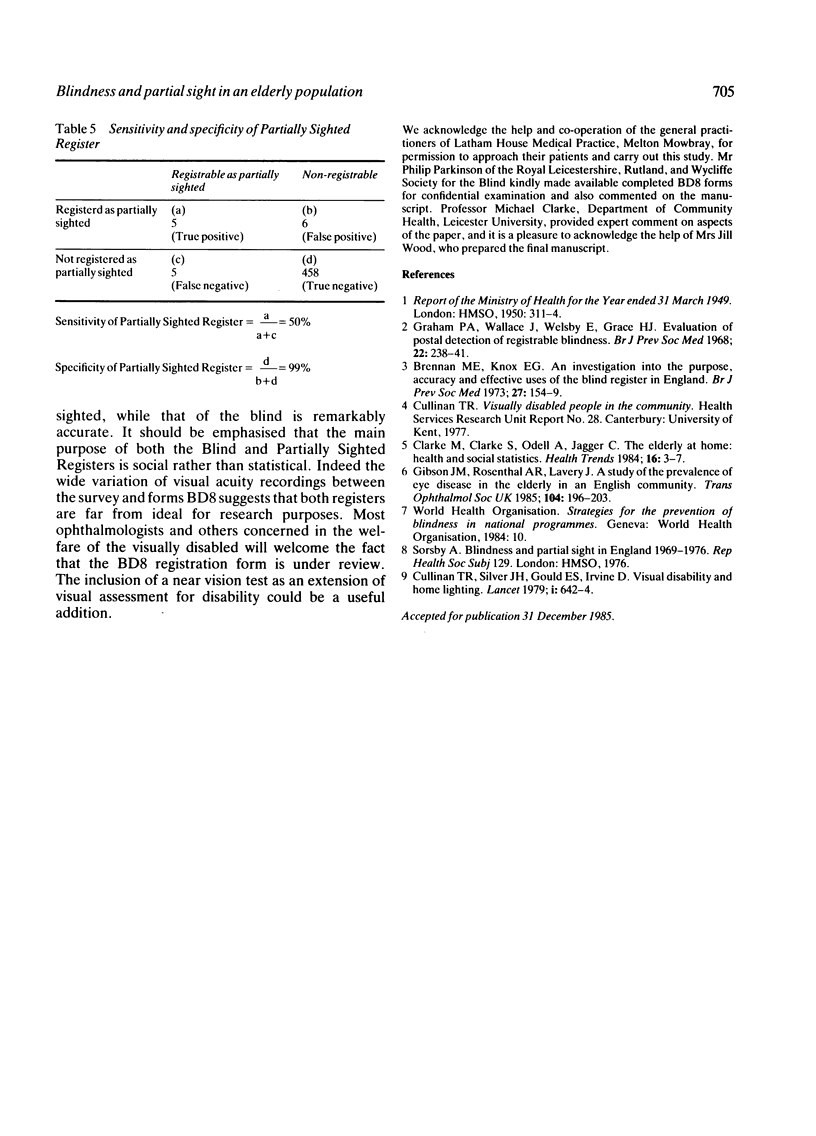
Selected References
These references are in PubMed. This may not be the complete list of references from this article.
- Brennan M. E., Knox E. G. An investigation into the purposes, accuracy, and effective uses of the Blind Register in England. Br J Prev Soc Med. 1973 Aug;27(3):154–159. doi: 10.1136/jech.27.3.154. [DOI] [PMC free article] [PubMed] [Google Scholar]
- Clarke M., Clarke S., Odell A., Jagger C. The elderly at home: health and social status. Health Trends. 1984 Feb;16(1):3–7. [PubMed] [Google Scholar]
- Cullinan T. R., Silver J. H., Gould E. S., Irvine D. Visual disability and home lighting. Lancet. 1979 Mar 24;1(8117):642–644. doi: 10.1016/s0140-6736(79)91082-1. [DOI] [PubMed] [Google Scholar]
- Gibson J. M., Rosenthal A. R., Lavery J. A study of the prevalence of eye disease in the elderly in an English community. Trans Ophthalmol Soc U K. 1985;104(Pt 2):196–203. [PubMed] [Google Scholar]
- Graham P. A., Wallace J. Evaluation of postal detection of registrable blindness. Br J Prev Soc Med. 1968 Oct;22(4):238–241. doi: 10.1136/jech.22.4.238. [DOI] [PMC free article] [PubMed] [Google Scholar]


